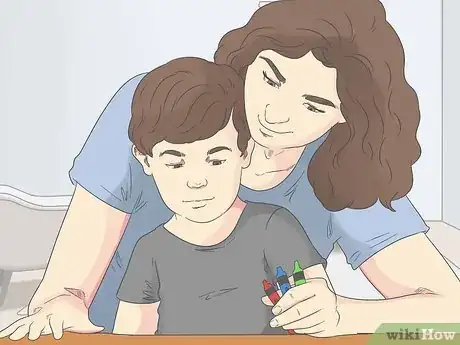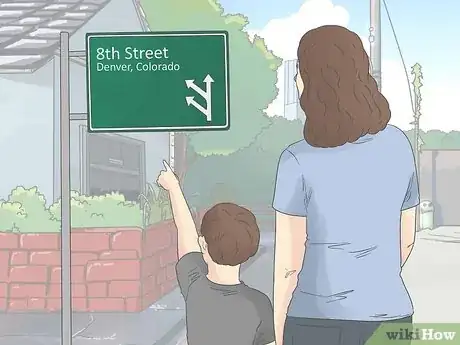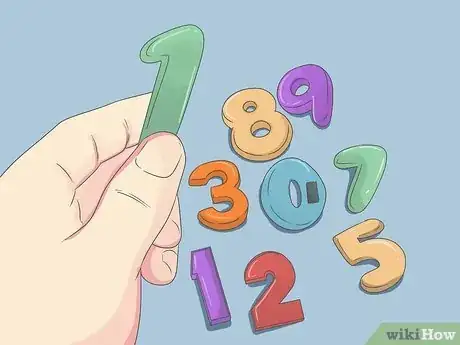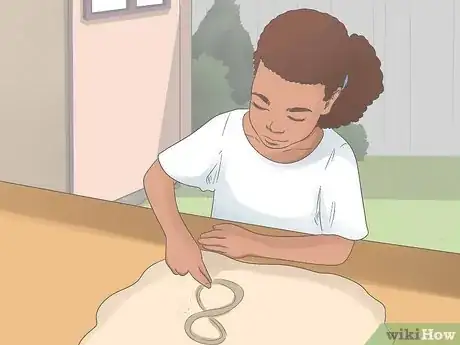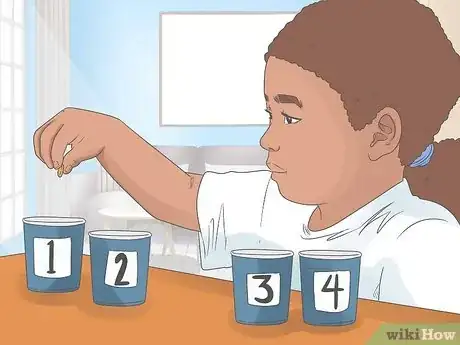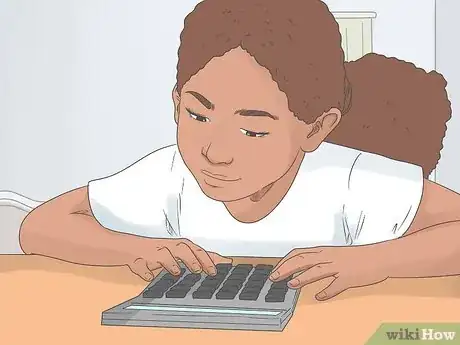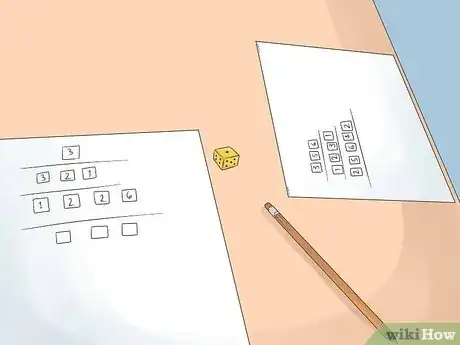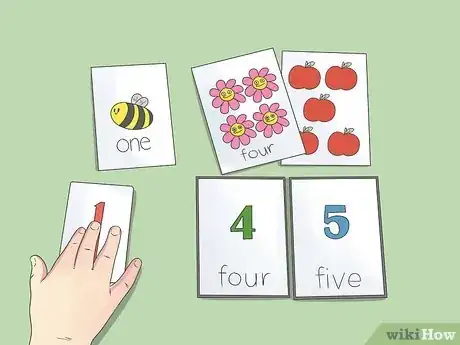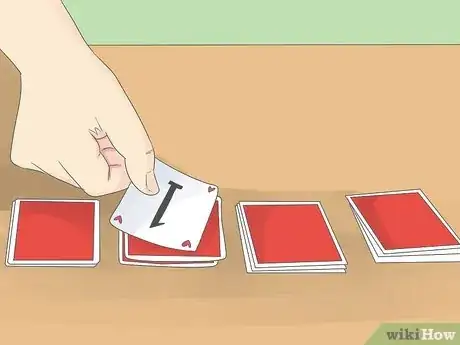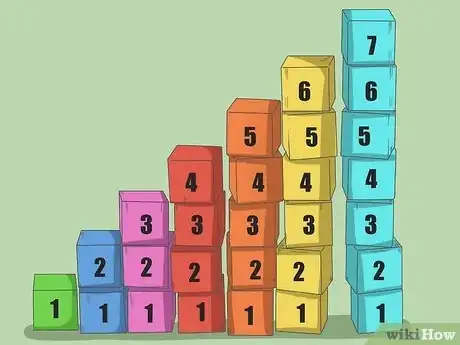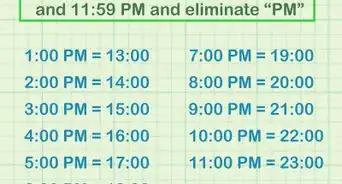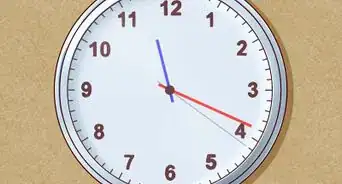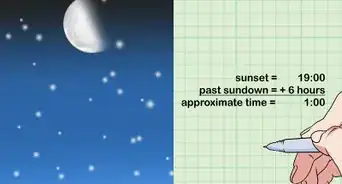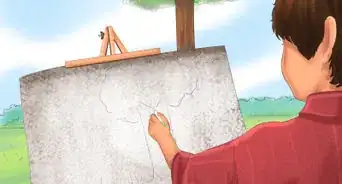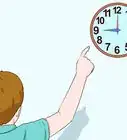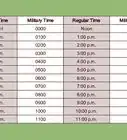This article was co-authored by Sylvia Rath. Sylvia Rath is a Parenting Specialist and the Director of Little Village Nursery School in Los Angeles, California. With over 30 years of experience, Sylvia guides parents through the preschool years and beyond by teaching respectful communication and positive discipline methods. Sylvia holds a BA in Psychology and Early Child Development from Antioch University. Before working at Little Village Nursery School, she taught preschool for eight years.
There are 7 references cited in this article, which can be found at the bottom of the page.
This article has been viewed 33,921 times.
Number recognition describes the ability to recognize numbers visually and then name them. For example, number recognition allows a child to understand that the symbol 2 references the word “two,” as well as the associated quantity. To develop number recognition for the numbers 1-10, start by consistently describing your child’s environment using numbers. You can incorporate numerals into sensory play activities, or organize games that will help your child understand this important concept.
Steps
Introducing Children to Numbers
-
1Use numbers to describe groups of things to your child. To build a foundation for number recognition, talk about your child’s environment in terms of numbers. If several crayons fell on the ground, you might say, “Oops, I dropped 3 crayons!” Or when reading a picture book, you might point at the illustration and say, “There are 2 airplanes in the sky.”
- Ask them to count up to a number with you out loud during playtime.[1]
- Make sure to use numbers when describing situations that your child had a hand in creating. If they drew a picture of 4 baby birds, for instance, you might point that out and ask: “Are you going to draw 4 daddy birds, too?”
- Start with smaller numbers, usually groupings up to 4-6. Larger numbers may be confusing for young children to grasp initially.
-
2Point out numbers on houses, street signs, or other locations. This will help your child start to recognize the look of different numerals. As you drive or walk around your neighborhood, call your child’s attention to house numbers or phone numbers on billboards, for example.[2]
- When you’re at home, point out numbers on telephone keypads, remote controls, clocks, or thermometers.
- Be consistent with your use of numbers in everyday conversation. The more often you use numbers to describe things and point out numerals in your child’s environment, the quicker they will master number recognition.
Advertisement -
3Ask children to complete household tasks involving numbers. Kids should understand that numbers aren’t just for math class. They can be used in real-life situations, as well. For instance, ask your child to put out the correct number of placemats for your family at dinner. Or, at arts and crafts class, ask them to bring enough glue sticks for each person at the table.[3]
- Give your child coins and a piggy bank, and ask your child to put a number of coins into the piggy bank.[4]
- These sorts of requests will encourage your child to consider their world in terms of numbers. That helps build the foundation for more complicated concepts.
Adding Numbers into Sensory Play
-
1Buy sets of magnetic numbers and ask your child to match them. Allow your child to play with these numbers freely at first so they begin to recognize the shapes of different digits. Then, ask them to match up pairs or groups of the same number. If they are older, see if they can line the numbers up in order.[5]
- Magnetic numbers can be struck to the refrigerator door at home, or to a baking sheet that can be used on the go.
-
2Have your child trace the numbers 1-10 into a thin layer of cornmeal. Spread a thin layer of gritty cornmeal across a baking sheet. Then, let your child trace different numbers into the cornmeal. If your child is just beginning to practice number recognition, you can provide an example of each numeral by writing it on a sheet of paper or pulling it up on your phone.[6]
- Once the tray is full of numbers, help your child smooth the cornmeal back out so they can keep practicing.
-
3Ask your child to “trace” numbers with pieces of yarn. Write the numbers from 1-10 on pieces of poster board. Then, cut several pieces of yarn in different colors and different lengths. Have your child arrange the yarn so it “traces” the shape of the number on the card.[7]
- If you’d like, you can even glue the yarn to the card. Once it dries, these number cards will offer an enjoyable tactile sensation for your preschooler.
-
4Sort buttons by number into labeled cups. Write the numbers 1-10 on 10 plastic cups. Then, give your child a handful of buttons or other small items (such as shells or pebbles). Have them place the correct number of items into each labeled cup.[8]
- Whatever items you use, make sure they are large enough that your child can’t swallow them or stick them up their nose, for example.
- This can be an excellent activity for multiple children to play cooperatively. If one child has mastered the concept, they can help guide their playmates who are still learning number recognition.
-
5Give your child a calculator to experiment with. Ask your child to find the number that shows how old they are, or find a number that’s on a nearby sign or house. Ask them to punch in the numbers from 1-10 in numerical order.[9]
- This is a great on-the-go tool. Keep it in your pocket or bag so you can pull it out when waiting in lines or for appointments.
Practicing Number Recognition With Games and Activities
-
1Roll a die to cover up the digits 1-6 on a number line. You’ll need 1 die, a piece of paper, pencils, 6 counters per player, and a 1-6 number line for each player. One player rolls the die and puts a counter on that number on their number line. The other player does the same thing. If either player rolls a number that has already been covered with a counter, they lose a turn. The first one to cover all 6 numbers wins the game.[10]
- You can also use a 1-12 number line for older children, and roll 2 dice instead of 1.
-
2Match numbered cards until you’ve gone through an entire deck. Have your child turn over the first card in a deck of numbered cards. Then, have them flip over each remaining card. If it matches the number of your first card, they should lay it next to the first. If it doesn’t, they should discard it.[11]
- At the end, ask your child to count the number of matching cards.
- You and your child can take turn flipping over cards so you can model your thought process for your child.
- You could use a deck of Uno cards with the special cards removed, or a deck of playing cards without the face cards.
-
3Play “Speed” with a deck of special cards that go up to to 10. You’ll need a deck of 10-frame cards for each player. These specialized cards feature a grid that contains a certain number of dots (from 1-10), which help children recognize and count numbers more easily. Each player should shuffle their deck and put them face up in a pile. Then, once an adult says "go," they should start sorting their cards into piles of the same number. The stacks must also be arranged in consecutive order. The first player to do this correctly wins.[12]
- Don’t stop the game when someone wins! All the players should finish sorting and ordering their cards.
- Play this game several times in a row to allow your children to develop more efficient strategies for sorting and ordering.
- You could even have your child play this game by themselves—just time how long it takes them to complete the tasks the first time. Then, when they play again, you can challenge them to do it in a shorter period of time.
-
4Make a number line from 1-10 and count out blocks for each number. Make a long, straight line on the floor using painter’s tape. Add 10 shorter, horizontal pieces of tape spaced evenly along the line. Use a sticky note to mark each short piece of tape with the numbers 1-10. Then, ask your child to put 1 block in the section next to the “1” sticky note, 2 blocks in the section next to the “2” note, and so on.
- If your child doesn’t recognize the number symbols but knows the names of the numbers, try starting with 1 and having them count up as they move up the number line. This will help them understand that the “8” symbol corresponds with the word “eight,” for example.
- If you have a younger preschooler, you may want to begin with the numbers 1-5 and then work up.
-
5Roll a die, then build a block tower using that number of blocks. Choose a die that has the number symbols on the side rather than dots. Make this game more complicated by taking turns and adding on to your tower each turn until you get to 10.[13]
- For example, your child rolls a 2 and builds a 2-block tower. You roll a 4 and stack 4 blocks to create a tower. Your child rolls again and gets a “6.” Then, they count out 6 additional blocks to add to their original tower—for a total of 8 blocks.
- Keep playing until both of your towers reach 10 blocks.
References
- ↑ Sylvia Rath. Parenting Specialist. Expert Interview. 18 May 2021.
- ↑ https://www.education.com/magazine/article/preschool-number-recognition-counting-easy/
- ↑ https://www.aplusteachingresources.com.au/number-recognition/
- ↑ Sylvia Rath. Parenting Specialist. Expert Interview. 18 May 2021.
- ↑ https://www.education.com/magazine/article/preschool-number-recognition-counting-easy/
- ↑ https://www.brighthubeducation.com/teaching-preschool/127761-teaching-number-recognition/
- ↑ https://www.brighthubeducation.com/teaching-preschool/127761-teaching-number-recognition/
- ↑ https://www.brighthubeducation.com/teaching-preschool/127761-teaching-number-recognition/
- ↑ https://www.education.com/magazine/article/preschool-number-recognition-counting-easy/
